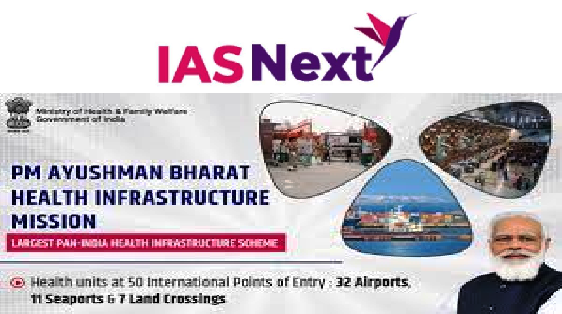CURRENT AFFAIRS
Get the most updated and recent current affair content on Padhaikaro.com
Ayushman Bharat Health Infrastructure Mission
- IAS NEXT, Lucknow
- 28, Oct 2021

Prime Minister Narendra Modi recently launched the Ayushman Bharat Health Infrastructure Mission, one of the largest pan-India schemes for strengthening healthcare infrastructure, in his parliamentary constituency Varanasi.
About the scheme:
- The scheme aims at strengthening healthcare infrastructure across the country.
- Its objective is to fill gaps in public health infrastructure, especially in critical care facilities and primary care in both urban and rural areas.
- Through this, critical care services will be available in all the districts of the country with more than five lakh population through exclusive critical care hospital blocks, while the remaining districts will be covered through referral services.
- People will have access to a full range of diagnostic services in the public healthcare system through a network of laboratories across the country, and integrated public health labs will be set up in all the districts.
- Integrated public health labs will also be set up in all districts, giving people access to “a full range of diagnostic services” through a network of laboratories across the country.
- An IT-enabled disease surveillance system will be established through a network of surveillance laboratories at block, district, regional and national levels.
- All the public health labs will be connected through the Integrated Health Information Portal, which will be expanded to all states and UTs.
Institutions to be set-up under the scheme:
Under the scheme, a national institution for one health, four new national institutes for virology, a regional research platform for WHO South East Asia Region, nine biosafety level-III laboratories, and five new regional national centres for disease control will be set up.
Benefits and significance of the scheme:
It will provide support for 17,788 rural health and wellness centres in 10 high-focus states. Further, 11,024 urban health and wellness centres will be established in all the States.
A brief overview of healthcare Infrastructure in India:
India has long been in need of a ubiquitous healthcare system. Here are the findings of a latest survey:
- 70 percent of the locations have public healthcare services. However, availability was less in rural areas (65 per cent) compared to urban areas (87 per cent).
- In 45 per cent of the surveyed locations, people could access healthcare services by walking, whereas in 43 per cent of the locations they needed to use transport.
- The survey also found that proximity to healthcare services is higher in urban localities: 64 percent of the enumerators in urban areas observed that people can access healthcare services by walking, while only 37 per cent in rural areas can do so.